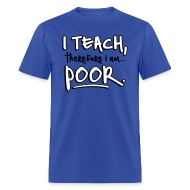Today's Guest Post comes from a Ms. Stephanie Bowyer, who runs a blog called Not Just Surviving. Stephanie writes about Kinesthetic Learners in the Classroom. It's interesting to see how this post complements Intellteacher's post from earlier in the month.
___________________________________________________________________
Teachers want all of their students to benefit from the classroom environment. Unfortunately for the teachers, no two students are ever alike. Some learn very well from handouts and others from lectures, but in every classroom there will be a student who just doesn't seem to work well with any teaching style. How can we reach out to this student? What is a teacher to do?
In recent years, researchers have learned many things about the brain. Where learning is concerned, they have found that there are three main types of learning styles. (Some people say four, some seven or eight, but the point remains the same. There are different styles.) The most common of the learning styles is visual. These students learn best by seeing things written on a board, a handout, the back of their hand, the top of their desk, and so on. Auditory learners take in information that they hear. They listen to lectures, they read things out loud to themselves, and they talk to other students about their lesson.
The third learning style is called kinesthetic, or tactile, learners.
What does a kinesthetic learner look like?
Kinesthetic learners are the ones who won't sit still in class, no matter what is going on. They are often wiggly, especially at younger ages. They always seem to want to touch things. Sometimes they will stand up for no reason, or ask to go to the bathroom often, when you know they shouldn't need to. This student may crawl under a table or desk to do their work – and will surprise you by getting it all done, correctly and much faster than usual.
Parents can give very helpful information about students and how they learn best. Where do they do their homework? What else is going on around them while they work? Do they have to walk around when having a conversation, especially if they are talking on the phone?
How does a kinesthetic learner learn?
There are two major aspects to consider regarding kinesthetic learners. First, they love to be moving around. In this aspect alone, the classroom environment is often not conducive to the education of these students. After all, an important element of the classroom is being able to sit still, at least for longer than 30 seconds at a time.
Also, these children learn by touching things, and doing things with their hands. They like models and manipulatives. Many of them also like to write or draw. Any activity that involves action, or something in their hands, will help them focus and recall information.
How can I translate this to the classroom?
Have you thought of a student who is kinesthetic? Then you've fought half the battle. Recognizing what they need is a huge step toward helping them succeed. (I'm sure you all know that, of course, but it bears repeating.)
In younger grades, be sure to schedule some time in during the day where you can afford to allow these students to stand up. Let them work at the back of the classroom, where they can stand without distracting anyone else. Schedule in some group time, and have the groups rearrange the desks in the room. Ask the student to draw a picture, or write a story, to show what you are teaching about.
Sometimes they don't need to be looking you in the eye when you speak to them. In fact, I had a student that didn't hear a word you said if you forced her to look you in the eye. If you let her draw or play with a toy while giving her directions, she heard everything and did the assignment perfectly. Realize that they may not need to be looking at you to hear what you are saying.
In older grades, give the students models to work with, or have them make their own. High school science classes are often extremely well-designed for kinesthetic learners, because they do labs and other hands-on activities. Again, let them draw pictures, or stress that they need to take notes on what you are saying. They won't like this, but it is one way to help them remember. Standing and moving around are still beneficial as students get older, although they often learn to sit still for longer periods of time.
Let students be themselves! Let them learn the way they need to, and they will amaze you with the amount that they can accomplish.
I am an Amazon.com Affiliate, and I warmly invite you to shop using my store!
Try Amazon Prime 30-Day Free Trial
Join HBO Free Trial
Try Amazon Prime 30-Day Free Trial
Join HBO Free Trial
Subscribe to:
Post Comments (Atom)











3 comments:
Excellent post and right on point, Stephanie. KL types tend be over looked at best and considered a perpetual problem at worst in the overall instructional design. From the relevant literature we know that KLs are in the vast minority so they garner very little attention in formal studies.
One of the things I've done with the "Fidget Monsters" is to have them sit either toward the back or sides of the classroom. I give them carte blanche to get up and move around whenever they feel the need. Their strategic positioning reduces disruption for the other students and allows the KL to be comfortable.
Another consideration is that of mental processing intervals. One of the really "nice" things about KLs is they will tell you when they are actively processing and when they have completed processing.
I didn't include it in my posted article but let's take the example of the ever present pen or pencil. KLs don't just hold the writing instrument; they are near constantly manipulating it in some fashion. If we key in on their prop during instruction we find that the speed - tempo and magnitude of twirling (example) changes frequently. What we are seeing is a metronome of sorts and it defines (can) where the KL is with regard to mental processing.
I watch for the lulls in manipulation and the times where the rhythm and speed of movement slips into a leisurely, even cadence. That tells me the student has absorbed what I presented and processed the newly acquired information to some degree. This is a key time to ask a follow on question or do something that leads them to use what they have processed in order to create deeper - further understanding.
Bang on regarding the eye contact thing. Eye to eye contact causes dissonance in their inner dialogue as it shifts their awareness away from the Body proper to one specific location. In essence, their inner landscape becomes disintegrated, crumbles and they shut down.
They are starting to think more people are visual, yet teachers seem to usually teach auditorially(I'm auditory). i find this hypocritical. Preist, you are confusing to read. Maybe you saying this would help. :)
Ah Jason, what you perceive as "confusion" I regard as integrated thought processes that weave together many different levels. You know, that whole thing with "Chaos" simply being a higher organizational state :)
And the Verification Word for today is "habiti" … which I just happen to know means a "tiny habit" as in a small routine or the formal garb worn by an extremely short Nun. .
Post a Comment